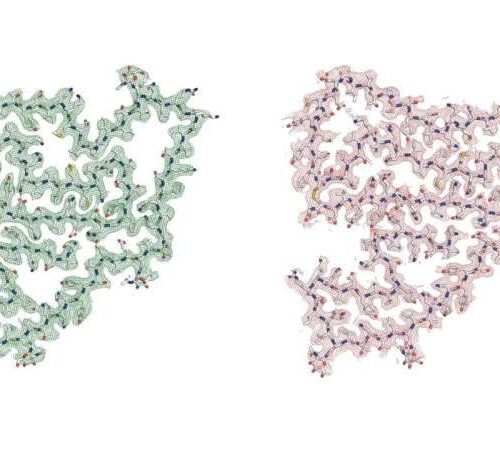by Columbia University A key fragment of the protein TMEM106B, several atomic models of which are shown here, can stack into single or twinned types of fibrils. Credit: Andrew Chang and Anthony Fitzpatrick / Columbia University’s Zuckerman Institute / Cell Take a cell-deep tour of a brain afflicted with Alzheimer’s disease, and you will find minuscule...

